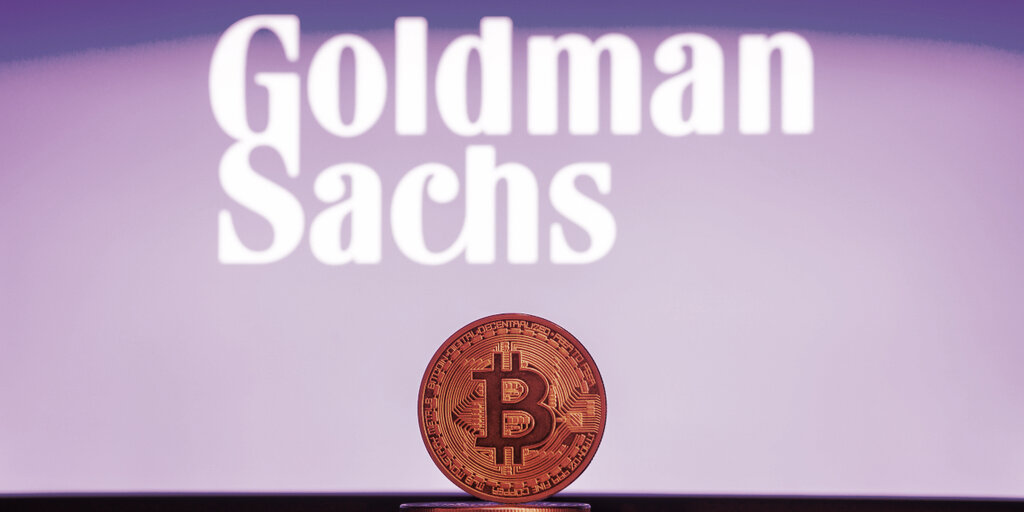Goldman Sachs: BTC’s Energy Problem Undermines Idea Of Digital Gold
3 min readGoldman Sachs analysts said yesterday that BTC cannot yet be seen as digital gold, on account of the cryptocurrency’s massive energy demands. Competition from other cryptocurrencies and a worrying lack of use cases were also cited as concerns in a research note released by the bank.
As a result, the report claims, it is therefore “too early” for BTC to compete with gold as a safe haven asset, and the two can coexist.
The comments are at odds with what many BTC advocates argue—that the flagship cryptocurrency is a hedge against inflation and a safe haven asset against financial instability.
In fact, when software company MicroStrategy first invested in BTC last year (the firm now holds over $5 billion in BTC), CEO Michael Saylor described BTC as digital gold.
But Goldman Sachs believes that Saylor—and many other BTC advocates—are mistaken.
BTC and the environment
Goldman Sachs’ note argues that BTC suffers from “weak environmental, social and governance scoring due to its high energy consumption.”
BTC functions on a proof-of-work consensus mechanism. This means the BTC network runs because many highly sophisticated computers perform complex calculations every second so that new blocks can be added to the BTC blockchain, and new BTC can be mined.
The process—commonly known as BTC mining—demands an extremely high level of energy. Cambridge University estimates that the BTC network consumes approximately 130 terawatt-hours (TWh) of electricity per year, which is enough to place BTC—if it were a country—among the top 30 countries in the world by energy consumption.
Previous research conducted by Decrypt showed that BTC’s resulting carbon footprint is broadly equivalent to 61 billion pounds of burned coal per year, 9 million homes’ average electricity consumption per year, or 138 billion miles driven by a passenger vehicle.
What’s more, a recently flooded coal mine in China caused a drop in BTC’s hash rate to levels not seen since November 2020, underlining the fact that the BTC network is still heavily reliant on non-renewable energy sources.
These wide-ranging environmental problems have—per Goldman Sachs—caused potential investors to steer clear of the flagship cryptocurrency.
BTC’s competitors
The note also argues that BTC is “vulnerable to losing store of value demand to another better-designed cryptocurrency.”
BTC commands the majority of the cryptocurrency industry’s total market cap, but that doesn’t mean the flagship cryptocurrency has no competitors.
One of its chief rivals is ETH, which is in the midst of a major technical upgrade that will bring the ETH network to a proof-of-stake system, leaving behind the environmentally costly proof-of-work system it currently shares with BTC.
This is, according to Goldman Sachs, one of BTC’s biggest challenges. BTC, it argues, is losing ground to other cryptocurrencies that some potential investors consider to be cleaner, more efficient, or easier to invest in—”such as ether and altcoins.”
“Competition among cryptocurrencies for the status of dominant long-term store of value is still on,” according to the Goldman Sachs analysts—compounding risks for investors looking to hold BTC as a long-term investment asset, or as “digital gold.”
BTC’s real-world use cases
Goldman Sachs’ analysts made a third claim: that BTC suffers from a lack of real-world use cases.
For Goldman Sachs, the fact that BTC has no real consensus use case means the cryptocurrency has no meaningful guard against price volatility—which, in turn, can dissuade potential investors.
“Real use is important because it smoothes the volatility of the price, as real demand adjusts to absorb swings in investment demand,” the analysts said, adding, “It also means that the asset is unlikely to go to zero.”
In contrast to BTC, other assets which are sold as having long-term investment appeal—those described as being reliable “stores of value”—actually do have real-world use cases that enjoy universal consensus.
“Traditional long-term stores of value such as gold, art, diamonds, wine and collectibles all have value and use beyond being stores of value,” the analysts said.






![Decentraland: Review & Beginner's Guide [current_date format=Y] 20 Decentraland: Review & Beginner's Guide](https://cryptheory.org/wp-content/uploads/2020/11/decentraland-02-gID_7-300x150.jpg)